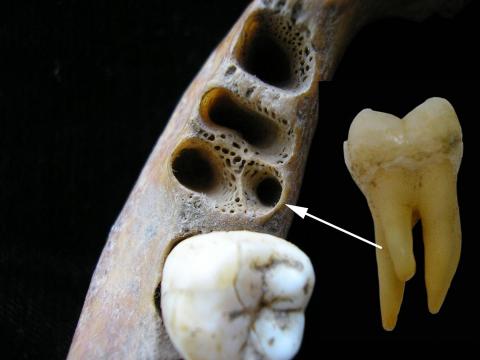The study centers on a three-rooted lower molar and reveals the first morphological evidence of interbreeding between H. sapiens and the Denisovans, a sister group of Neanderthals.
In a previous study, Shara Bailey, a professor of anthropology at New York University and the paper's lead author, and colleagues concluded that the Denisovans occupied the Tibetan Plateau long before Homo sapiens arrived in the region. That work and this new analysis focused on a hominin lower mandible found on the Tibetan Plateau in Baishiya Karst Cave in Xiahe, China in 1980.

The three-rooted lower molar anomaly in a recent Asian individual. Left: tooth sockets showing position of accessory root; right: three-rooted lower first molar tooth. Image: Christine Lee
The authors sought to shine light on relationship between archaic humans who occupied Asia more than 160,000 years ago and modern Asians.
"In Asia, there have long been claims for continuity between archaic and modern humans because of some shared traits," says Bailey. "But many of those traits are primitive or are not unique to Asians. However, the three-rooted lower molar trait is unique to Asian groups. Its presence in a 160,000-year-old archaic human in Asia strongly suggests the trait was transferred to H. sapiens in the region through interbreeding with archaic humans in Asia."





Comments